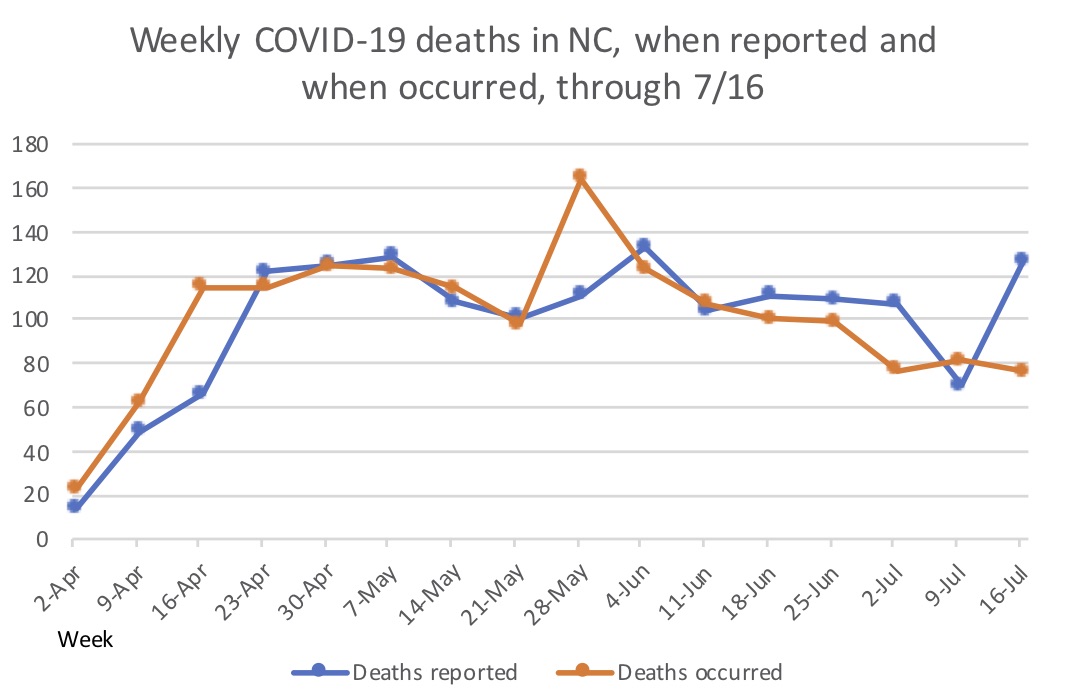Three months ago, we were closing in on a date that many businesses were desperate to reach. April 29, the day that Gov. Roy Cooper’s shutdown/lockdown order was set to expire. That 30-day order, which took effect March 30, was based on the White House guidance of “Thirty Days to Slow the Spread.” Cooper’s press release announced:
Governor Roy Cooper ordered people in the state of North Carolina to stay at home for thirty days, until April 29, 2020, in another step to slow the spread of the COVID-19 coronavirus. …
“To continue our aggressive battle against COVID-19, I have signed a Stay at Home Order for the entire state of North Carolina. Though it is difficult we must do this to slow the disease spread,” said Governor Cooper. “We need our medical system to be able to care for the friends and family we know will become seriously ill from the virus.”
As with Cooper’s other orders, this order was leveled to “flatten the curve.” Everyone understood then what flattening the curve meant: to prevent the feared pandemic spike of infections all at once by spreading out the infections so that, as Cooper said above, “our medical system [is] able to care for [our] friends and family.” As Cooper stated in announcing another order:
Each and every choice we are making is intended to flatten the curve and provide our health care system the ability to treat the sickest patients in the coming months.
The 30-day order to shut down and lock down the state was about ensuring hospital resources could be available for critically ill patients. If that was done, then the state’s economy could open back up.
First the good news …
On April 23, the governor held a press conference to announce his reopening plan. For small business owners and their employees statewide, this was a lifeline. Time was running out:
According to Mills, currently a Senior Fellow at the Harvard Business School, small businesses have just around 27 days on average in cash. Restaurants have even less, with 17 days of cash on average. And if you run out of cash, Mills said, “you’re dead.”
A long crawl through the desert — by then unemployment filings just since mid-March were closing in on three-quarters of a million! — but water was finally in reach.
That day, Cooper announced the good news he had been hinting at it for a week prior. Cooper had said on April 15 that “Our efforts to flatten the curve are working, and that means we have saved lives.” On April 17 he made the same announcement on his Twitter feed, “North Carolina’s efforts to flatten the curve are working.”
On April 23, he told North Carolinians, “It’s clear we are flattening the curve.” He stood before a large slide that announced it unequivocally: “we have flattened the curve.” The bold lettering was his.
We did it. The reason for the shutdowns and lockdown was achieved. The feared hospital crisis didn’t occur.
Here is that slide Cooper used in his press conference:
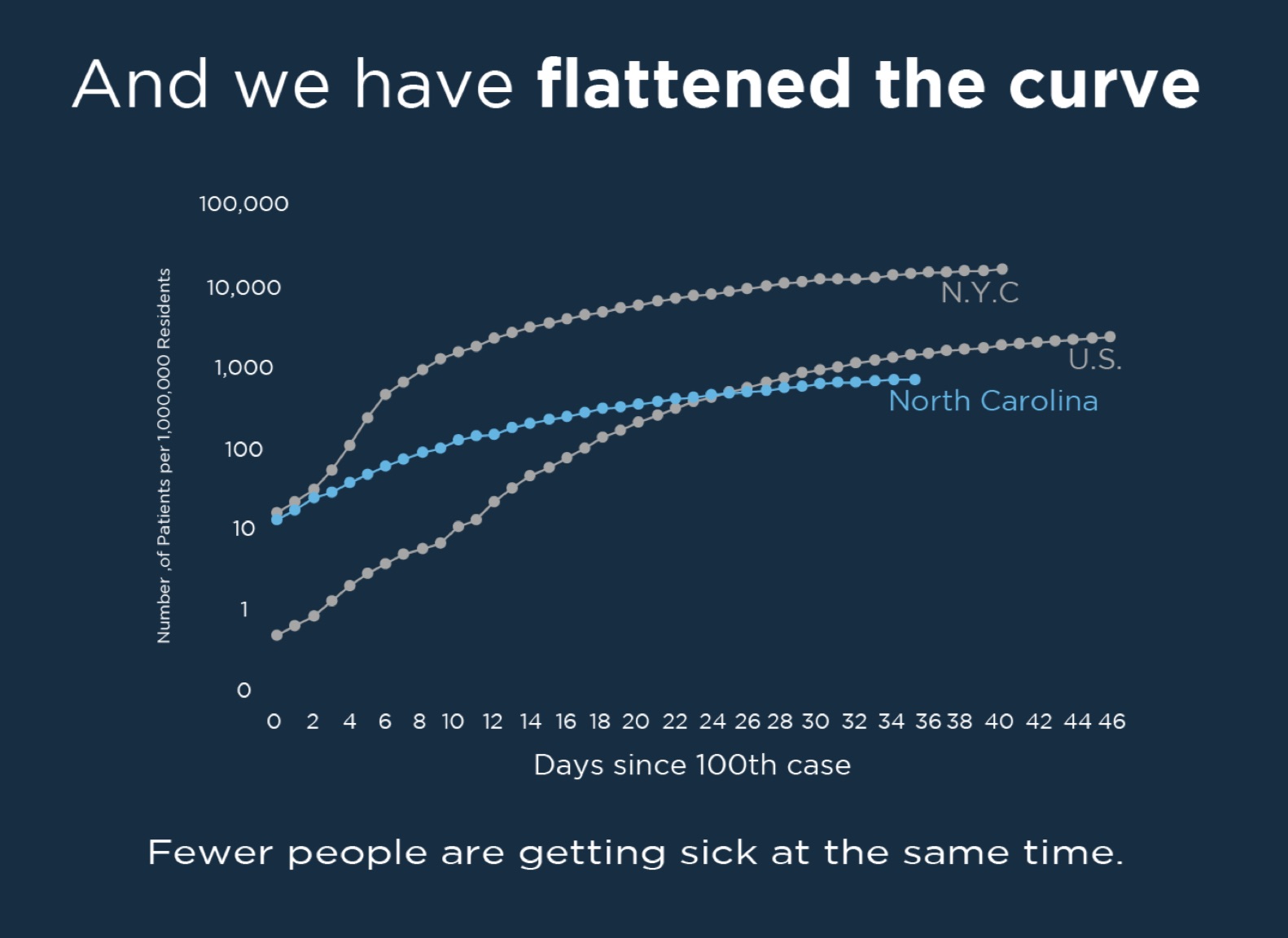
It’s even more impressive than it looks. See the y-axis for “Number of Patients Per 100,000 Residents”? It goes from 0 to 1 to … 10 then … 100, 1,000, 10,000, and finally 100,000.
That’s a logarithmic scale, not a linear scale. There are good reasons to use logarithmic scales. This isn’t one. The data have already been adjusted for population differences, so Cooper’s graph erases rather than illustrates key differences in orders of magnitude.
North Carolina’s hospital caseload (and caseload trajectory) was noticeably lower than the rest of the nation’s and never even approached the magnitude of New York City’s. Even now it’s a blip on the tiny “flattened curve” scenario dwarfed by the spike scenarios presented to General Assembly on March 26 by the North Carolina Medical Society.
A linear version of this patients-per-capita slide would look more like this (a rough approximation):
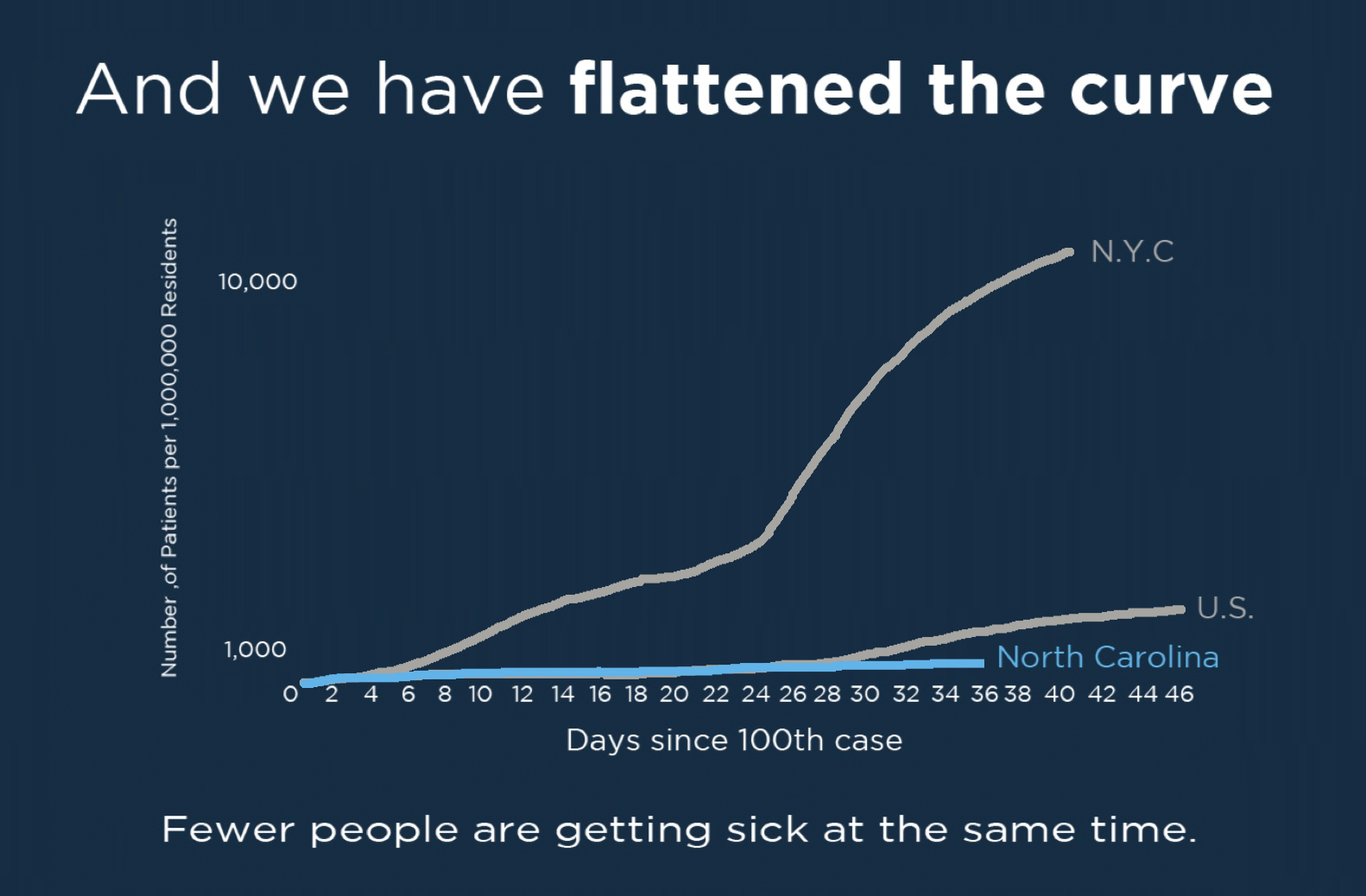
So when he said North Carolina flattened the curve, friends, we flattened the curve.
The implication was clear: it’s time to open up and get back to work.
Or so we had been led to believe.
That was three months ago today.
Epilogue: Here are some recent graphs related to COVID-19 in NC:
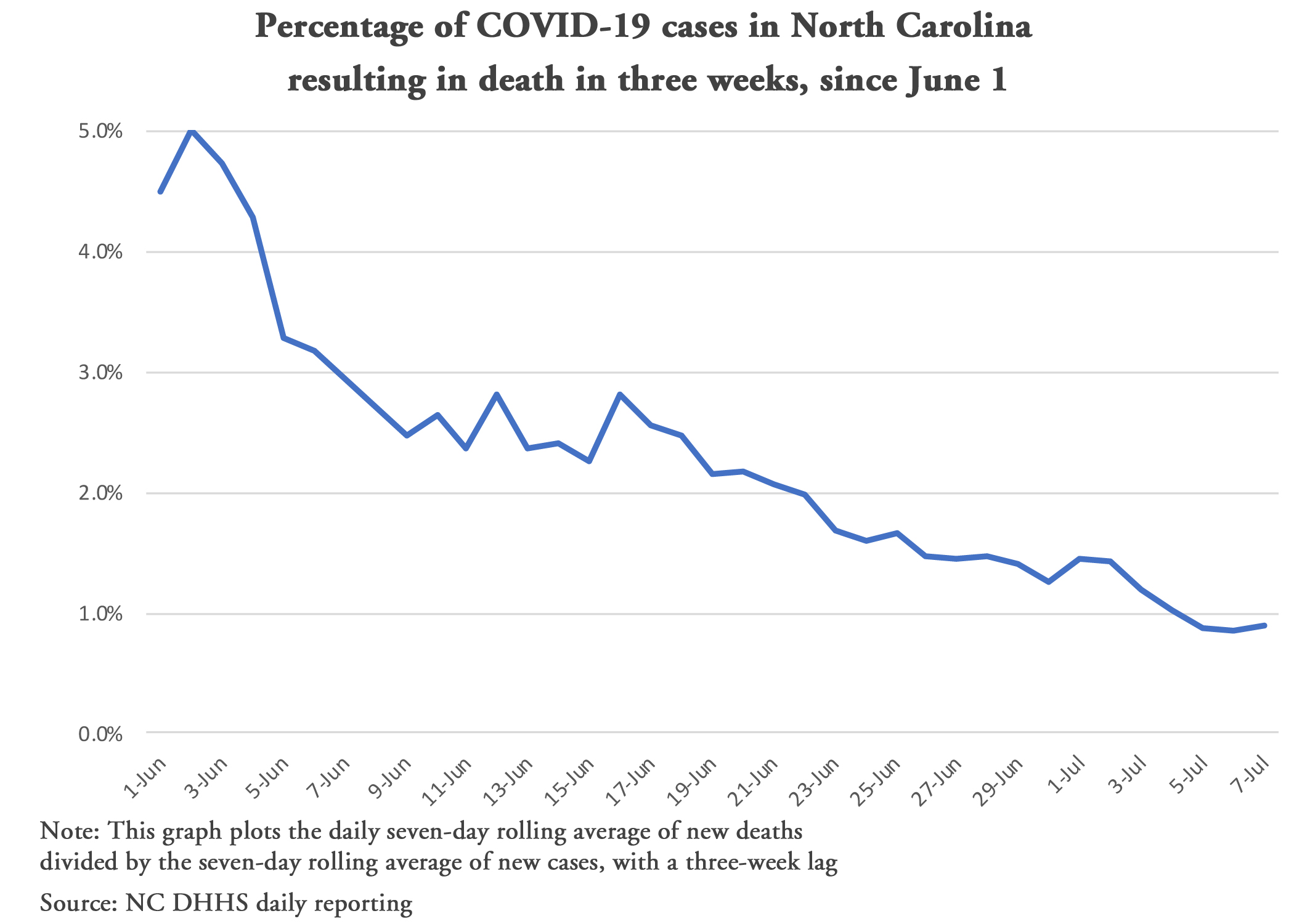
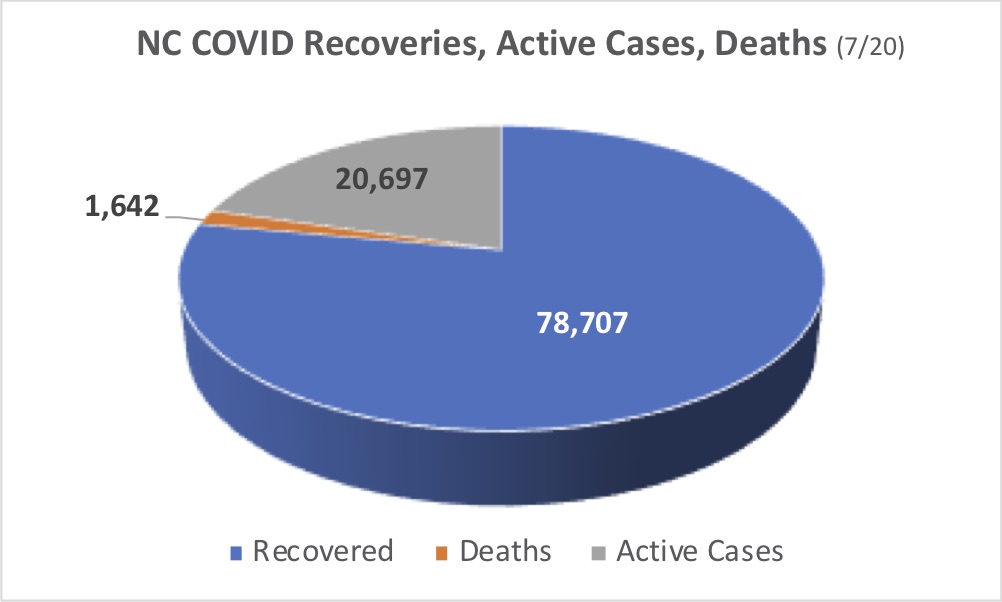
Here is the full NC Medical Society graph with the July 9 number added (you’ll have to look closely):
